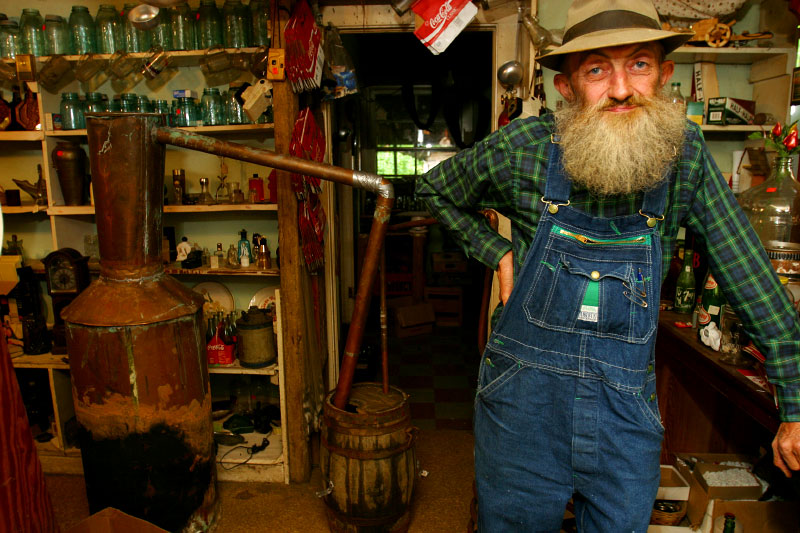

*shrug* Marketing.

Posted on 01/05/2014 12:24:09 AM PST by Slings and Arrows
Dear Cecil:
I was in the Costco liquor section when I happened upon a locked display case with three bottles inside (one whisky, one cognac, one I can’t remember), each priced upwards of $2,500. I imagine anyone who bought and drank one of these would be heavily influenced by "buyer's bias" regarding the actual taste of the product; still, I’d think the difference would be great enough that an average, uneducated drinker could pick out the ultra-expensive bottle from a $30 one in a blind test. What can science tell us about why an extremely high-quality and typically older alcohol would be so much more pleasant to drink, and thus much more valuable?
Cecil replies:
Science can tell us plenty about booze, Mort. However, the relevant discipline shifts as we rise in the price scale. At the low end, where we’re talking about beverages commonly drunk from paper bags, chemistry can easily demonstrate what separates rotgut from the decent stuff. Above a certain point, however, we find more useful insight in psychology, if you take my meaning. The question is where that shift occurs. In bitter moments I tend to say it’s around ten bucks a bottle, although having had a tasty if somewhat pricey Chateauneuf-du-Pape the other night I can see where you might objectively demonstrate that $100 was money well spent. But $2,500? Sorry, this is prima facie evidence of the madness of crowds.
With the exception of pure ethanol, alcoholic beverages are complex mixtures of chemicals derived from the raw materials plus the containers they’re aged and stored in. Variations in taste generally arise from differences in volatile organic compounds (VOCs), which readily vaporize at room temp when the container is opened and give the brew, vintage, or what have you its characteristic smell — not the common term, particularly among wine enthusiasts, but let’s call a spade a spade.
The VOCs potentially found in alcoholic beverages make for a long list. Most of the terms mean nothing to the nonspecialist, but since you asked, here are some things you might detect if your man cave is equipped with a mass spectrometer:
Still, while we know in a general way which VOCs are associated with what taste, that’s a long way from saying we can detail with any confidence the chemical differences separating an award-winning beverage from an OK one.
In many cases these differences are minute. For example, the subtle taste of “greenness” in a Sauvignon Blanc, an undesirable quality in other varieties of wine, arises from methoxypyrazine compounds, detectable by humans in the parts per trillion. It’s surely also true that taste is a result of the interplay between multiple VOCs, some of which chemists have yet to identify. The best means of judging quality, therefore, remains the human nose and palate.
These make for an imperfect instrument. Nowhere is this more evident than in the world of wine tasting:
Does that mean alleged differences in alcoholic beverages are BS? Depends on what you consider differences. When nonprofessional tasters were trained to use a standardized whisky-tasting vocabulary and then given samples of 40 blended Scotch whiskies, their assessments generally corresponded with the four categories of whisky being tested (deluxe, standard, cheap, and West Highland). In a separate study, the four categories were themselves found to have distinctive chemical signatures. In other words, it was possible to sense broad variations in quality, and those variations had a chemical basis.
On the other hand, consistently distinguishing a presumably exquisite $2,500 bottle from a merely excellent $100 one … eh, maybe somebody with an unusually sensitive palate could do it. You or me? That I doubt.


*shrug* Marketing.


"...yeah,bout tree fitty"
ChocoVine.
Mmmm mmmm mmm.
Dunno about ‘scientifically detectable’ (although some differences would be bandied about for several years as to what makes a good liquor or what makes it rotgut), but speaking from experience: once you have tasted the truly fine ones... there really is no forgetting it. You will never mistake it for the cheap dregs ever again.
A: $2,400
So that’s why the Loch Ness Monster wanted the money!

This is the advice I gave to my own child: you can drink cheap beer and wine, but if you are drinking the hard stuff, go high end.
A: The difference between spending the first part of the evening with a great lot of pissed mates at the sports bar, and a truly memorable night with a truly jaw-dropping sheila whose name you probably might not remember, nor ever see again, but for every moment you remember: it was worth it, s'truth! *smile* (note: I am not admitting to anything, right? *grin*)

I think that the graphic artist got to that bottle before Redd.
I’m told that Trader Joe’s single malt scotch is comparable to many of the good (perhaps not the best) “label” single malts at about half the price. I’ve not confirmed this.

LOL! I love that! That’s a wee Irish baby, I reckon.
o/~ Well they call it that good old mountain dew... o/~
Not after the first drink ... it’s ALL booze after that.
Faith and begorrah, 'tis true.

"..you hear bout dat lot ness monter?...eyea, just tree fitty"
I f'get your name, but'cha' left a legacy other men are afraid to emulate.
Disclaimer: Opinions posted on Free Republic are those of the individual posters and do not necessarily represent the opinion of Free Republic or its management. All materials posted herein are protected by copyright law and the exemption for fair use of copyrighted works.